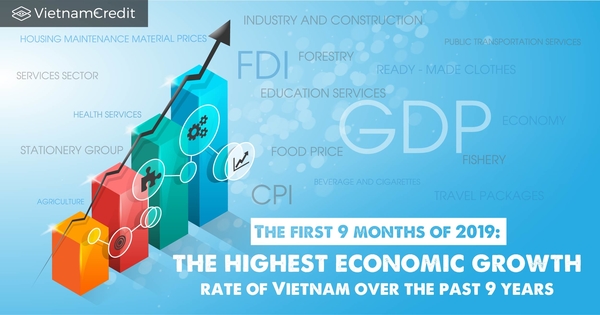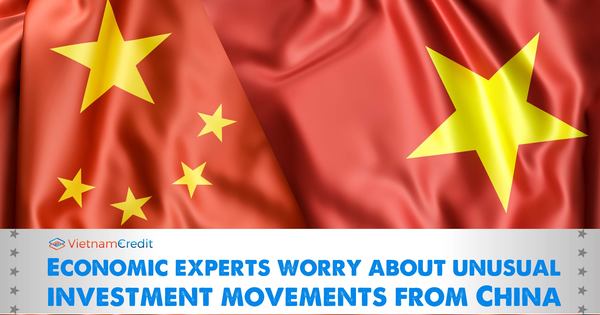EVFTA is believed to open up great opportunities for Vietnam to increase trade exchanges and attract investment from member states of the EU.
In fact, statitstics has showed some positive initial effects of this trade agreement on Vietnam in terms of trade exchange, foreign direct investment (FDI) attraction, and institutional reform. However, Vietnam has also faced many difficulties since this agreement took effect.
Impacts of EVFTA on Vietnam
We will look at the impacts of this free trade agreement on Vietnam from three distinct aspects, including Vietnam – EU trade exchange, FDI attraction and institutional reform.
Vietnam - EU trade exchange
Strong commitments in market opening offer new trade development opportunities between Vietnam and the EU, so the most direct and obvious impacts are reflected in trade exchange between the two parties. The export turnover of computers, electronic products and components from Vietnam to the EU recorded a positive growth compared to the pre-EVFTA period.
Statistics shows that in 2019, the total import and export turnover between Vietnam and EU member states (28 countries) reached over 56.4 billion USD, accounting for nearly 11% of the total import and export turnover of Vietnam. In particular, Vietnam's exports of goods to the EU reached 41.54 billion USD, down 0.81% compared to 2018, accounting for 15.7% of the country's total export turnover. While Vietnam's imports from the EU were 14.9 billion USD, up 7.4%, accounting for 5.9% of turnover.

Source: General Department of Customs
In the beginning of 2020, the COVID-19 pandemic had a direct impact on Vietnam's import and export activities. However, trade exchange between Vietnam and EU countries still experienced positive growth thanks to the implementation of EVFTA.
Immediately after the EVFTA took effect, from the beginning of August to November 2020, Vietnam's export turnover of goods to the EU reached 12.4 billion USD, up 1% over the same period in 2019. As a result, after a sharp decline in the first 7 months of 2020 due to the impact of the COVID-19 pandemic, Vietnam's total export turnover to the EU increased, which resulted in the fact that Vietnam's export turnover to the EU decreased by just over 3.5% in 2020.
However, some commodities still witnessed a sharp decline in export turnover in 2020. For example, Vietnam’s export turnover of phones and components to the EU decreased by 18.6%, while that of textiles decreased by 15%.

Source: General Department of Customs
Four months after the EVFTA came into effect, Vietnam's goods import turnover from the EU reached 5.06 billion USD, which increased by 6.3% over the same period in 2019 and was much higher than the 3% increase in the first 7 months of 2020 (before the EVFTA came into effect). In the same period, imports of a number of products from the EU market increased sharply compared to the same period in 2019, such as animal feed and raw materials, products from iron and steel, other food preparations, pesticides and raw materials, and common metal.
Thus, it can be basically seen that the EVFTA has created more commercial benefits to the EU than to Vietnam.
FDI attraction from the EU
With commitments on investment liberalization, EU businesses will enjoy more incentives when investing and doing business in Vietnam. At the same time, the adjustments and amendments to Vietnam's legal regulations for consistancy with the EVFTA in a number of fields also contribute to helping businesses in general and EU businesses in particular enjoy higher protection for creative investment activities. Therefore, the EVFTA is considered to create great opportunities for Vietnam to attract investors from the EU.
In the first nine months of 2020, the total investment capital from the EU into Vietnam reached 752 million USD, an increase of more than 100 million USD and 180 projects compared to pre-EVFTA period.
However, Vietnam is still facing a number of challenges when implementing the EVFTA in order to effectively attract FDI from the EU, including reforming institutions, policies, and management mechanisms; upgrading the infrastructure system; improving the technology level and human resources; improving the competitiveness and cooperation ability with EU partners of Vietnamese enterprises in order to participate more deeply in the global supply chain.
Vietnam's institutional reform
The EVFTA includes strict regulations and rules on investment procedures, customs, trade facilitation, technical standards, animal and plant quarantine measures, intellectual property, and government procurement. This agreement requires Vietnam to review the current domestic legal system and develop and amend relevant legal documents to create favorable conditions to fully and effectively implement the commitments.
In fact, the Government of Vietnam had actively done what is needed. Right before the signing of the EVFTA, the Government had directed ministries and branches to coordinate with the Ministry of Justice to urgently review current regulations in legal documents under their responsibility to propose amendment, supplementation or appropriate application form to ensure compliance with the requirements of EVFTA.
On August 6, 2020, the Prime Minister signed and promulgated Decision No. 1201/QD-TTg on approving the implementation plan of the Free Trade Agreement between the Socialist Republic of Vietnam and the European Union (EVFTA). This action plan clearly defines objectives, key tasks and ministries and sectors involved in the implementation with a specific roadmap.
To implement the plan of the Government, ministries, sectors and localities also issued decisions to implement EVFTA within their respective fields of management.
Expectations vs Reality: a huge difference
For Vietnam, the EVFTA is expected to increase its GDP by an average of 3.2% in the first 5 years of implementation, 5.3% for the next 5 years and 7.72% within 5 years later. According to the World Bank (WB), if both EVFTA and the Comprehensive and Progressive Agreement for Trans-Pacific Partnership (CPTPP) were implemented simultaneously, Vietnam's GDP could increase by 3.2% in the next decade.

With a strong commitment to opening the market and tax incentives, the EVFTA is expected to open up opportunities for Vietnamese enterprises to increase their export turnover to the EU about 42% in 2025 and nearly 45% in 2030.
In fact, positive impacts of the EVFTA on Vietnam's economy have not been as obvious as expected, and the level of impact of the EVFTA is not clear.
In addition to the positive effects, the commitments to open the market for goods and services that Vietnam offers to the EU also create competitive pressure to Vietnam's economy, businesses, and goods and services. However, this is a healthy competitive pressure.
Source: Ministry of Industry and Trade, General Department of Customs


























































